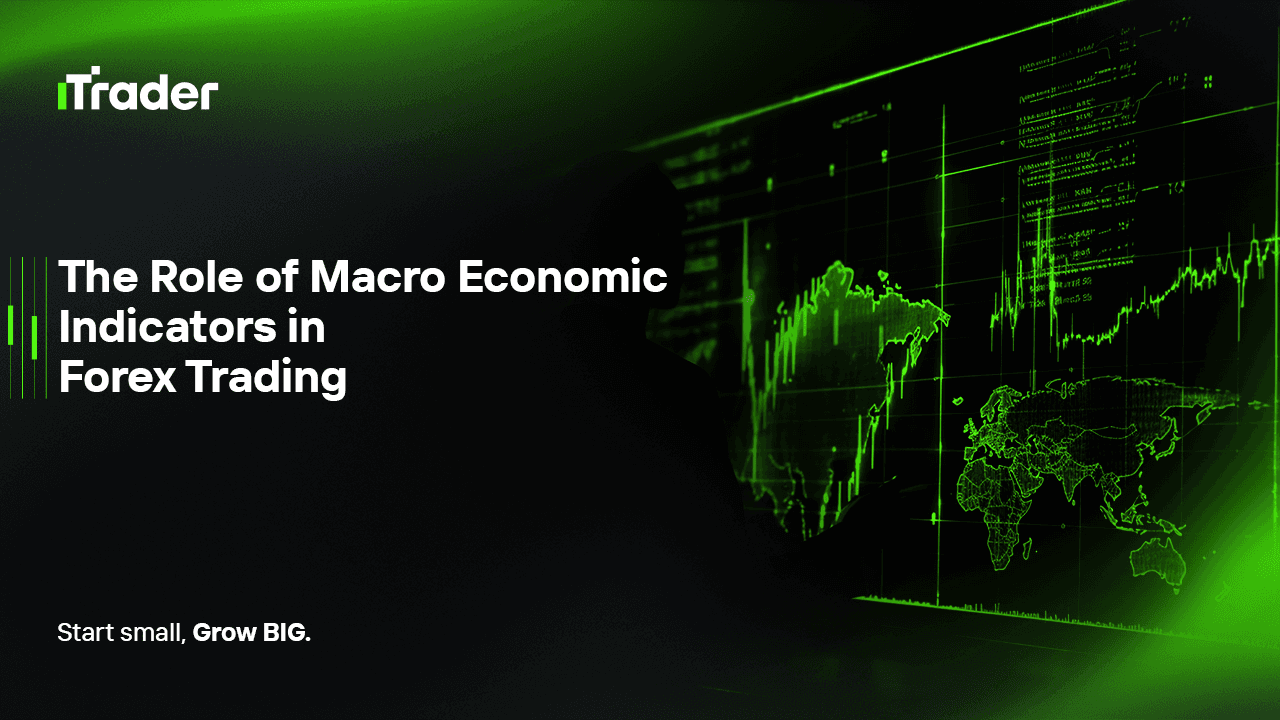2025-08-22
In the world of professional trading, especially for those engaged in prop firm challenges, understanding the forces that drive currency movements goes far beyond technical analysis. While price action, liquidity shifts, and order flow dynamics are crucial in short-term decision-making, the macro backdrop sets the stage upon which these micro-movements unfold. For prop traders who need consistent performance under strict drawdown and risk rules, grasping the relationship between macroeconomic indicators and forex market behavior is not just an academic exercise—it is a survival skill.

Currencies are, at their core, expressions of national economies. The health, stability, and policy direction of an economy shape investor perception, capital flows, and ultimately the valuation of its currency. This means that data points like GDP growth, inflation reports, interest rate decisions, and labor market trends are not simply numbers on an economic calendar; they are signals of structural pressure that shape medium- and long-term trends while also creating short bursts of volatility.
In this article, we will explore how macroeconomic indicators interact with forex markets, with a focus on what prop traders specifically need to extract from them. We will look at key economic data categories, how they impact currency valuations, the interplay with monetary policy, and practical strategies to incorporate macro awareness into a prop trading framework.
Prop firm traders often emphasize risk control, trade frequency, and execution discipline. Yet the majority of their failures are not due to poor entries but rather inadequate adaptation to market regime shifts. These shifts are almost always driven by macroeconomic developments—policy pivots, unexpected data surprises, or global capital rotations.
Ignoring macro means ignoring the root causes of volatility clusters. For example:
For a prop trader bound by strict maximum daily loss and overall drawdown limits, understanding these forces can prevent getting blindsided by volatility that looks “random” on the chart but is fully explainable through the macro lens.
Macroeconomic data releases are not created equal. Some indicators consistently move markets; others provide context without triggering major price shifts. Below are the key categories:
For traders, growth indicators matter because they influence risk appetite and central bank expectations.
Currencies often react violently to inflation surprises, since they directly affect interest rate futures pricing.
Interest rates are the ultimate driver of currency valuation. The expectation of higher yields attracts capital flows. Therefore, central bank meetings, forward guidance, and minutes are often more important than the data itself.
It is not the raw data that moves markets—it is the difference between expectation and outcome. A CPI print of 3.2% might strengthen a currency if consensus was 3.0%, but weaken it if traders had already priced in 3.5%.
This is why prop traders need to track expectations, not just releases. Economic calendars with consensus estimates, as well as tools like OIS curves and bond yield spreads, give critical context.
Another layer is market sentiment and narrative. In some regimes, traders ignore weak data if they believe a central bank is committed to tightening. In other regimes, even small misses can trigger outsized moves. Thus, the same number can have different effects depending on macro context.
One of the biggest advantages of macro awareness is in position sizing and risk allocation. Prop traders don’t need to predict every number, but they must anticipate volatility pockets.
In prop environments where risk per day is capped, managing exposure around macro events is essential for survival.
For prop traders looking to operationalize macro awareness, a simple framework can be:
While individual data releases move markets in the short run, larger macro cycles drive sustained trends. Prop traders who align with these cycles can ride multi-month moves while avoiding contrarian traps.
Key themes include:
Prop traders often focus heavily on technical precision—entry timing, spreads, execution speed. But without a macro compass, these micro-skills are vulnerable to shifts that feel random. In reality, nothing is random when you see the cause-effect chain: data → central bank expectations → capital flows → currency price.
Understanding macroeconomic indicators is not about becoming an economist; it’s about protecting capital, anticipating volatility, and aligning with the market’s dominant forces. For prop traders, it is the difference between surviving challenges and consistently scaling capital allocations.
© 2025 iTrader Global Limited | 公司注册号 15962
iTrader Global Limited 位于科摩罗联盟安儒昂自治岛穆察姆杜 Hamchako,并受科摩罗证券委员会(Securities Commission of the Comoros)许可及监管。我们的牌照号为 L15962/ITGL。
iTrader Global Limited 以“iTrader”作为交易名称,获授权从事外汇交易业务。公司的标志、商标及网站均为 iTrader Global Limited 的专属财产。
风险提示: 差价合约(CFD)交易因杠杆作用存在高风险,可能导致资金快速亏损,并非适合所有投资者。
交易资金、差价合约及其他高杠杆产品需要具备专业知识。
研究显示,84.01% 使用杠杆的交易者会遭受亏损。请务必充分了解相关风险,并确认在交易前已做好承担资金损失的准备。
iTrader 特此声明,不会对任何个人或法人在杠杆交易中产生的风险、亏损或其他损失承担全部责任。
本网站提供的新闻及信息仅用于教育目的。用户应独立且审慎地作出金融决策。
限制条款: iTrader 不会向法律、法规或政策禁止此类活动的国家或地区居民提供本网站或相关服务。若您居住在限制使用本网站或服务的司法管辖区,您有责任确保遵守当地法律。iTrader 不保证其网站内容在所有司法管辖区均适用或合法。
iTrader Global Limited 不向以下国家/地区的公民提供服务,包括但不限于:美国、巴西、加拿大、以色列及伊朗。